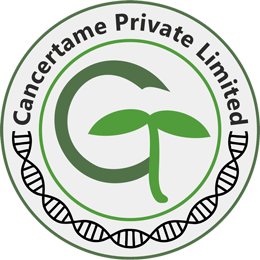Contact Us
Other Articles
2. What is Chemotherapy?
3. What is Radiotherapy?
4. Role of Ayurveda in Cancer Treatment
5. Genesis of Cancer
6. Early Detection of Cancer
7. Diet, Nutrition & Cancer
8. Tobacco Smoking & Cancer
9. Conventional Treatment of Cancer
10. Soft Tissue Sarcoma
11. Mesothelioma
12. Skin Cancer
13. Bone Cancer
14. Leukaemia
15. Chronic Lymphocytic Leukaemia (CLL)
16. Chronic Myelogenous Leukaemia (CML)
17. Acute Lymphocytic Leukaemia (ALL) & Acute Non-Lymphocytic Leukaemias (ANLL)
18. Acute Myelogenous Leukaemia (AML)
19. Lymphoma
20. Multiple Myeloma
21. Breast Cancer
22. Prostate Cancer
23. Oral Cancer (Carcinoma of the Cheek, Lips & Tongue)
24. Carcinoma of the Salivary Gland
25. Carcinoma of the Paranasal Sinus
26. Carcinoma of Pharynx (Oropharynx, Nasopharynx and Hypopharynx)
27. Carcinoma of the Larynx
28. Brain & Spinal Cord Tumours
29. Primary Tumours of the Brain
30. Metastases in the Brain
31. Carcinoma of the Oesophagus
32. Thyroid Cancer
33. Bronchogenic Carcinoma (Lung Cancer)
34. Secondary Cancers of the Lung
35. Carcinoma of the Stomach
36. Liver Cancer
37. Gallbladder & Biliary Tract Cancer
38. Pancreatic Cancer
39. Kidney Cancer (Renal Cell Carcinoma and Nephroblastoma)
40. Urinary Tract (Transitional Cell Carcinoma) & Bladder Cancer
41. Carcinoma of Colon & Rectum
42. Primary Tumours of the Testis
43. Ovarian Cancer (Stromal, Germ Cell and Krukenberg's Tumour)
44. Carcinoma of Uterus
45. Cervix Cancer
46. Paediatric Cancers
47. AIDS Related Cancers
48. Carcinoma of Unknown Primary Site (CUPS)
49. Role of Nutrition in Cancer Treatment
50. Chinese Medicine in Cancer Treatment
Primary tumours of the testis occur in men usually during 20 to 30 years of age.
About 90 per cent primary testicular tumours are germ cell tumours, which
include seminoma and non-seminoma. The remaining 10 per cent testicular tumours
are non-germ cell tumours, which include Leydig cell tumour, Sertoli cell
tumour and gonadoblastoma. The exact cause of testicular tumours is not fully
understood but there are certain risk factors, which include:
- Testicular atrophy - Due to trauma or
infection
- Cryptorchidism
- Klinefelter's syndrome - Small testes,
enlarged breasts and lack of secondary sex characters in males
- Gonadal aplasia - Failure of the testicular
development
- Hermaphroditism
- Low weight at birth
Primary testicular tumours usually present with
painless swelling of the testis. There may be a heaviness in the scrotum, weight
loss and fatigue. Intratesticular hemorrhage may occur leading to pain. There
may be obstruction of inferior vena cava leading to oedema in the lower
extremities. Involvement of retroperitoneal lymph nodes may cause backache.
There may be pulmonary metastases leading to cough. The cerebral metastases may
occur leading to a headache. In advanced stages of the germ cell testicular
tumour, there may be gynaecomastia and supraclavicular lymphadenopathy.
- In stage I, the primary testicular tumour is
localised within the testis.
- In stage II, the tumour involves abdominal
lymph nodes.
- In stage III, the tumour involves other organs
of the body such as the liver and the lungs.
- A recurrent testicular tumour is the one that
reappears after an apparent recovery in response to the initial treatment.
Procedures used in the diagnosis of a primary
testicular tumour includes:
- Ultrasound
- CT scan
- Intravenous pyelography (IVP)
- Lymphangiography
- MRI
Raised serum levels of human chorionic gonadotropin
(hCG), alpha-fetoprotein (AFP) and lactate dehydrogenase (LDH) are indicators
of non-seminomas. The testicular biopsy is generally not recommended because
cutting through an outer capsule of the testis may contribute to metastases of the
tumour. Since most of the testicular tumours are malignant, the standard
surgical procedure is to remove the affected testis and send it for
histopathological examination.
Testicular self-examination (TSE) is recommended to
all the males once in a month to detect tumour of the testis at an early stage.
TSE should be done after a warm water bath that relaxes the scrotum, making it
easier to feel any abnormal growth. One should look for a lump in the testis;
enlargement of the testis; heaviness in the scrotum; and pain or tenderness in
the testis or the scrotum.
Disclaimer:
This content is for information and educational purposes only and should not be perceived as medical advice. Please consult a certified medical or healthcare professional before making any decision regarding your health using the content above.
Click here to go back to the list of all Articles
Add New Comment
-
 Pallavi
Pallavi
What if the testicular metastasis has reached to lungs and after surgery ,observation thetumour is found in brain. i really appreciate if anyone can answer this. Cancertame Private Limited
Cancertame Private Limited
Ms. Pallavi, Your query has been replied to by our support team on the Email ID provided by you, for any other query you can write us back at support@cancertame.com Regards, Support Team
07 Jun 2019



Primary Tumours of the Testis